
Blessed with a rich history, culture, and art, picturesque nature, delicious cuisine, and unique gifts, Iwate Prefecture is a captivating prefecture full of delightful charms.
- Table of Contents
-
- About Iwate Prefecture
- Iwate's 4 Main Areas
- Top Attractions in Iwate
- Skiing in Iwate
- What's the weather like in Iwate? When is the best time to visit?
- What should I pack when traveling to Iwate?
- Access to Iwate's four major areas
- What foods is Iwate famous for?
- What should I buy in Iwate?
- Tips on traveling around Iwate
- Recommended Iwate Tours
- Where to stay in Iwate
- Seasonal Events in Iwate
About Iwate Prefecture
Iwate (岩手) is the second-largest prefecture in Japan. It is blessed with beautiful mountain terrains and lush greenery, making it home to some of the country's most breathtaking natural landscapes. This wonderful region also has a rich history, with many destinations that offer unique traditional arts and culture, ancient folklore, and fairy tales that distinguish it from the rest of Japan.
To help you thoroughly explore the wonders of this beautiful region, we have compiled an ultimate guide to Iwate prefecture. It provides information on the best things to see and do, how to get around, where to find great local food and gifts, and more!
Iwate's 4 Main Areas

If you're seeking an adventure-filled destination, Iwate is the perfect place. Whether you're interested in exploring ancient Japanese history, skiing, taking a dip in hot springs, savoring local cuisine, or marveling at the stunning views of the mountains and coastline, Iwate has something to offer everyone.
The prefecture is divided into four distinctive areas: Southeastern, Southwestern, Northwestern, and Northeastern. Each region has its unique charm and attractions. Below is a brief explanation of each area to help you better understand what to expect from this fascinating place.
Southwestern Area (Hiraizumi, Hanamaki City, Ichinoseki)

Southwestern Iwate is a tourism hub famed for its rich history and breathtaking landscapes. Hiraizumi, the area's highlight, is a UNESCO World Heritage site with ancient Heian Buddhist relics, distinct from those in Kyoto. Nearby, Hanamaki City, where poet Kenji Miyazawa was born, hosts the Miyazawa Kenji Fairy Tale Village, offering a magical literary escape.
Nature enthusiasts will appreciate Geibikei Gorge, renowned for its lush waters and cliffs, and ranked among Japan's Top 100 Scenic Views. Winter sports fans will find ideal conditions at Geto Kogen Ski Resort, while both Geto and Hanamaki onsens offer perfect relaxation. The region is also famous for its Maesawa beef.
Visitors can explore a blend of cultural and natural wonders, from ancient temples and gardens in Hiraizumi to outdoor adventures, enhanced by local gastronomy and soothing hot springs. A full tour of Hiraizumi might take 6-8 hours, with the Geibikei cruise and nearby attractions taking about 2-3 hours. An extra day is advisable for additional activities like skiing or onsen visits.
- Time recommended: At least one full day
- Hiraizumi: This expansive complex of Buddhist temples and gardens requires a half-day (6-8 hours) to explore main sites like Chuson-ji and Motsu-ji. For a deeper dive into the area, such as visiting Takkoku-no Iwaya-Bishamonodo, you might need more time due to less frequent access.
- Geibikei Gorge: Account for about 2-3 hours here, including the 90-minute river cruise and some additional sightseeing.
- Extra Activities: If planning to ski at Geto Kogen or visit Geto or Hanamaki onsen, consider adding an extra day to your itinerary.
Southeastern Area (Tono City, Kamaishi)

The Southeastern Area of Iwate, steeped in myth and history, features Tono at its core—a village alive with ancient Japanese folklore, exuding mystery and charm.
This region is also notable in Japan's industrial narrative, home to the Kamaishi Hashino Mining Site in Kamaishi City, a UNESCO World Heritage site. Kamaishi, located along the picturesque Sanriku Rias coast, is celebrated for its rich seafood from some of the world's most fertile fishing grounds.
Seafood lovers can savor fresh catches at SunFish Kamaishi, while nearby Sea Plaza Kamaishi offers local souvenirs and showcases the city's post-2011 tsunami recovery, a resilience also celebrated during the 2019 Rugby World Cup.
To fully experience this area, plan at least half a day for Tono to explore its museums and sites like the Kappabuchi Pool and Gohyaku Rakkan. Allow 6-8 hours for a comprehensive visit, including travel. An extra 2-3 hours lets you delve into Kamaishi's surroundings, potentially extending your visit to Kamaishi Daikannon or the Hoshino Blast Furnace site. Morning is the best time for a SunFish market tour, capped off with a delicious seafood lunch at the market's upstairs restaurants.
- Time recommended: Half to full day
- Allocate half to a full day for Tono Village to immerse in its museums and outdoor sites like the Kappabuchi Pool and Gohyaku Rakkan. Exploring Kamaishi requires an additional 2-3 hours.
- Extra Activities: Kamaishi Neighborhood - Travel time varies if you visit farther attractions like Kamaishi Daikannon or the Hoshino Blast Furnace site. Visit the Sun Fish Kamaishi market early in the morning for a tour, followed by a seafood lunch.
Northwestern Area (Morioka City, Mt. Hachimantai)

The Northwestern area of Iwate blends scenic beauty, historical sites, and culinary delights. Morioka, the capital, has deep ties to the Nanbu clan and features the picturesque ruins of Morioka Castle, set against the backdrop of the majestic Iwate and Hachimantai mountains. The city is renowned for its unique noodle dishes: Wanko soba, Morioka Reimen, and Jajamen, offering a unique foodie journey.
Nature lovers will be captivated by Mt. Hachimantai, known for its stunning vistas and premier ski resorts like Appi Kogen and Shizukuishi. The region’s secluded onsens are perfect for a peaceful retreat, and Koiwai Farm provides beautiful landscapes and top-quality dairy products.
To fully enjoy Morioka’s historical and cultural heritage, spend 3-4 hours exploring the old castle town and perhaps take on a Wanko Soba noodle challenge. For trips to Mt. Hachimantai, allocate a full day or two, taking into account the 2-hour bus ride from Morioka Station to the mountain’s plateau. Hiking trails on the plateau typically require about 2 hours, with additional time recommended for bus schedule variability and travel adjustments.
- Time recommended: Half to full day
- Morioka City: Spend 3-4 hours exploring historical sites and enjoying cultural activities, including participating in local workshops or trying Wanko Soba.
- Mt. Hachimantai: Dedicate at least a full day due to travel time (about 2 hours by bus from Morioka) and the hiking duration on the mountain.
Northeastern Area (Sanriku Coast, Miyako City, Kuji City)

The Northeastern Area of Iwate, marked by the dramatic Sanriku coastline, is a spectacle of unique topography and stunning landscapes. Journeying along this coast via the Sanriku Railway from Miyako to Kuji offers a unique chance to experience the area’s tranquil beauty.
Ryusendo Cave, one of Japan’s finest limestone caverns, captivates with its deep marine blue waters. Northwards, Kuji City celebrates its rich fishing heritage, highlighted by the Ama divers—women who dive for fresh seafood. The Kosode Ama Center allows visitors to taste these oceanic treasures, providing a remarkable culinary experience.
When visiting this region, enjoy the breathtaking coastal views and exceptional seafood.
- Time recommended: Half a day
- Jodogahama: Less than an hour for promenades and observatory decks; add 1-2 hours for lunch.
- Ryusendo Cave: Exploring the cave takes less than an hour, but allow 1-2 hours if visiting the science museum.
- Transportation Tips: Local bus services are infrequent; consider using taxis or a car for efficiency. For those planning to use the Sanriku Railway, factor in extra time due to limited trains and possible schedule changes.
Top Attractions in Iwate
Chuson-ji Temple (Hiraizumi)

Chuson-ji is a significant attraction in Hiraizumi, where you can experience the unique Buddhism that evolved during the Heian period. The golden hall in Chuson-ji is a remarkable place, adorned with luxurious artifacts that explicitly depict the Buddhist idea of Utopia. The exceptional remains of Chuson-ji are a valuable cultural asset that communicates its special place in Japanese history. It is undoubtedly a destination worth visiting when in Hiraizumi and is worthy of world heritage recognition.
-
Chuson-ji Temple中尊寺
- Address Koromonoseki-202 Hiraizumi, Nishiiwai District, Iwate 029-4195
Motsu-ji Temple (Hiraizumi)

Motsu-ji, along with Chuson-ji, is another significant historical destination in Hiraizumi. It boasts numerous magnificent architectural remains, but the main attraction is the stunning Jyodo-style garden. This traditional circular garden attempts to depict the Buddhist concept of Pureland. The elegance of the garden is an excellent example of aristocratic art from the Heian period. It is a World Heritage site that you should visit when in Hiraizumi.
-
Motsuji Temple毛越寺
- Address Osawa-58 Hiraizumi, Nishiiwai District, Iwate 029-4102
Takkoku-no-Iwaya Bishamondo (Hiraizumi)
If you are looking for a more exciting adventure in Hiraizumi, consider heading further south to explore Takkoku-no-Iwaya Bishamondo, a unique ancient temple built into the face of a rugged cliff. This temple commemorates the victory of the Fujiwara clan over the Emishi tribes in the early 9th century. You will find a huge image of Buddha engraved on the rock face, so be sure to check it out!
-
Takkoku-no-Iwaya Bishamondo達谷窟毘沙門堂
- Address Kitazawa-16, Nishiiwai District, Hiraizumi, Iwate 029-4102
Geibikei Gorge (Ichinoseki City)
The Geibikei Gorge River Cruise is the perfect way to experience the natural beauty of the Gebikei Gorge. During the 90-minute ride, you'll make several stops at various hotspots to take in the stunning scenery. The boat is traditionally operated by a skilled boatsman or woman using a long pole. Towards the journey's end, the boatman or woman will even treat you to a folk song performance called "Gemini Oiwake." It's a wonderful way to relax and take in the sights and sounds of the gentle stream and its surroundings. Who knows, it might even surpass a Venetian cruise!
To add some excitement to your Geibikei Gorge adventure, why not try your luck with a game of Untama? This involves throwing a lucky stone into a hole at the giant cliff called Daigeibi-dan. If you get a strike, legend has it that your wish will come true. There are ten types of lucky stones, each representing different wishes such as destiny and longevity. It's a great way to add some novelty to your peaceful cruise.
-

-
Address
467 Nagasakacho, Higashiyamacho, Ichinoseki City, Iwate Prefecture, 029-0302
View Map -
Nearest Station
Geibikei Station (Ofunato Line)
5 minutes on foot
- Phone Number 0191-47-2341
-
Address
467 Nagasakacho, Higashiyamacho, Ichinoseki City, Iwate Prefecture, 029-0302
Joken-ji Temple and the Kappabuchi Pool (Tono City)

As per the ancient tale of Tono, Kappabuchi Pool is said to be the home of a famous super creature called "Kappa." This mysterious green creature is characterized by a dish on its head and is known to indulge in mischievous activities with passersby. Whether you choose to believe in this ancient story or not, the setting of this place is spooky and helps create a mystical atmosphere, which enhances the magical experience here. Adjacent to the pool is the Joken-ji Temple, a cozy temple dedicated to the Kappa gods.
-
Jokenji Temple常堅寺
- Address 7 Chiwari-50 Tsuchibuchicho Tsuchibuchi, Tono City, Iwate 028-0555
Gohyaku Rakan

If you're interested in exploring the rich historical heritage of Tono City, I recommend visiting Gohyaku Rakan. This hidden gem of Iwate is located in a forest, just a 10-minute drive from central Tono. Gohyaku Rakan is a precious site with spiritual rocks engraved with images of Buddhist disciples. Around 500 of these rocks were created as a means to appease the spirits of the lives lost during the famine that hit Tohoku over 200 years ago.
-
Gohyaku Rakan五百羅漢
- Address 31 Chiwari Ayaoricho Nissato, Tono City, Iwate 028-0531
Unetori Shrine

Tono, a forested area outside the city center, is home to a small shrine called Unetori Shrine, which is believed to bring good luck in matters of love. This shrine is devoted to the god of love, and visitors can pray for a successful relationship by tying a red handkerchief to a tree using their left hand. If you are searching for your soulmate, why not try this ritual and see if it brings you luck?
-
Unetori Shrine卯子酉神社
- Address 11-23 Shimokumicho, Tono City, Iwate 028-0526
Folk Villages: Tono Furusato Village and Denosho-en

Tono is famous for its ancient folklore and traditional farmhouse, Nambu Magariya. This L-shaped residence was commonly found in the Nambu region during the end of the Edo period. Many of these traditional dwellings are preserved in folk villages such as Tono Furusato Village and Densho-en. Visitors can enjoy a glimpse inside and participate in traditional activities offered at the facilities.
-
Tono Furusato Village遠野ふるさと村
- Address 5-89-1, Kamitsukimoushi, Tsukimoushicho, Tono City, Iwate 028-0661

At Densho-en, you can explore a great showcase of ancient folklore stories and even listen to oral storytelling, which is a legacy of Tono's mythology. For more information, please visit https://tonojikan.jp/ml/.
-
Densho-en伝承園
- Address 6 Chiwari-5-1 Tsuchibuchicho Tsuchibuchi, Tono City, Iwate 028-0555
Kamaishi Hashino Mining Site

Kamaishi and its surroundings were once the center of the steel industry during the Industrial Revolution. Today, the area is home to significant remains from that period, with some even listed as World Heritage treasures. One site that stands out is the Kamaishi Hashino Mining Site, home to one of the few remaining blast furnaces in Japan. If you enjoy history, a visit is a great way to learn more about the area's industrial past.
-
Kamaishi Hashino Mining Site橋野鉄鉱山インフォメーションセンター
- Address 2-6 Hashinocho, Kamaishi, Iwate 026-0411
Kamaishi Dai-kannon Temple

When you visit Kamaishi, you can't miss seeing the massive statue of Buddha, known as Kamaishi Daikannon. This unique statue stands over 48 meters tall and is holding a fish, while watching over sailors heading out to sea. Although the statue doesn't have a long history, its extravagant features will impress any visitor. Before you reach the Kannon statue, you can enjoy the magnificent staircase or take the escalator, an exciting attraction. Once you reach the Kannon statue, you can also visit the observatory deck and enjoy a stunning panoramic view of the Kamaishi Bay.
-
Kamaishi Dai-kannon Temple石應禅寺釜石大観音
- Address 3 Chome-9-1 Odairacho, Kamaishi, Iwate 026-0002
Sun Fish Kamaishi
If you happen to be in the southeastern area, make sure you don't miss out on the opportunity to have some fresh seafood. The Sanriku Rias Coast is a great place to find it, and you can try some of the best seafood at the Sun Fish Market in Kamaishi. When you're at the market, head upstairs to one of the restaurants and give the fresh sea urchin and abalone a try!
-

-
Address
2-1, Suzukocho, Kamaishi-shi, Iwate, 026-0031
View Map -
Nearest Station
Kamaishi Station (Kamaishi Line)
- Phone Number 0193-31-3668
-
Address
2-1, Suzukocho, Kamaishi-shi, Iwate, 026-0031
Morioka Castle Ruins Park

During the 15th century, Morioka played an important role in Tohoku's political and economic power, led by the Nambu clan of samurai. As a symbol of their authority, Morioka Castle, a magnificent three-story castle, stood proudly over the town until its demolition in 1874. However, the remnants of the castle and its glory days can still be found at Morioka Castle Ruins Park. The park boasts ancient stone walls left intact, providing a romantic atmosphere for a stroll.
-
Morioka Castle Ruins Park盛岡城跡公園
- Address 1-37 Uchimaru, Morioka, Iwate 020-0023
Bank of Iwate Red Brick Building

Another landmark of Morioka is the stunning red brick building of the Bank of Iwate, designed by Kingo Tatsuno, a renowned architect representing the 20th century, who is most well known for building Tokyo Station. Like Tokyo Station, this building is an important cultural property of Japan, as it represents Japan's special era of modernization. Both the exterior and interior adopt unique architectural designs that blend oriental and Western features. You'll find libraries and exhibitions in the building introducing Morioka's industrial and commercial history.
-
Bank of Iwate Red Brick Building岩手銀行赤レンガ館
- Address 1 Chome-2-20 Nakanohashidori, Morioka, Iwate 020-0871
・Website: https://www.iwagin-akarengakan.jp/
Museums
Morioka has many museums that showcase history, art, culture, and food. The Morioka History and Culture Museum is great for history buffs, while the Iwate Museum of Art is perfect for art lovers. Morioka has many other museums to offer, so take your time to find the one that suits your interests best.
Morioka Handcrafts Village

If you have had enough sightseeing and are looking for a first-hand experience of Morioka's indigenous crafts and food, you can visit the Morioka Handcrafts Village. There are 14 workshops, including traditional confectionary and snack making, textile and ceramic making, and many more! Why not take part in Iwate's traditions and take home your very own special gift that will always remind you of the fun-filled trip?
-
Morioka Handcrafts Village盛岡手づくり村
- Address Oirino-64-102 Tsunagi, Morioka, Iwate 020-0055
Website: https://tezukurimura.com/
Hachimantai Aspite Line
The Hachimantai Aspite Line is a 27-kilometer driving route that connects Iwate and Akita, passing through the Towada-Hachimantai National Park. This route is famous for its seasonal vistas, but many people come here to experience the massive ice corridor, which is formed by a line of snow walls that is 6 meters high. The snow corridor is open to visitors starting at the end of April, but it is closed during winter and early spring due to heavy snow. At the foot of Mt. Hachimantai, you can also enjoy the splendid seasonal scenery of cherry blossoms.
-

-
Address
Matsuoyoriki, Hachimantai-shi, Iwate, 028-7302
View Map -
Nearest Station
Appikogen Station (Hanawa Line)
- Phone Number 0195-78-3500
-
Address
Matsuoyoriki, Hachimantai-shi, Iwate, 028-7302
Trekking Mt. Hachimantai Plateau
The Mount Hachimantai plateau is located 1612 meters above sea level and is a significant part of the Towada Hachimantai National Park. The plateau is home to primitive vegetation, ponds, swamps, and marshes that emit an intrinsic beauty.
If you want to experience the power of nature, you can take the Hachimantai Nature Observation trail course that leads to scenic viewpoints such as Meganenuma Pond, Gamanuma Pond, and Hachimantainuma Pond. And if you're looking to escape the busy and stressful daily routine, why not rejuvenate yourself with some "forest bathing"?
See the Towada-Hachimantai National Park website for more information on visiting and trails.
-

-
Address
Obukazawakokuyurin, Tazawako, Senboku-shi, Akita, 014-0300
View Map -
Nearest Station
Obuke Station (Hanawa Line)
- Phone Number 0195-78-3500
-
Address
Obukazawakokuyurin, Tazawako, Senboku-shi, Akita, 014-0300
Kosode Coast and culture of Ama

Kuji is a suburban city located in the northern part of Iwate. It is situated near the Kosode Coast, which is known for its beautiful blue gradients that attract tourists from around the world. The area is also home to an interesting fishing culture called Ama, or female free divers. This tradition has been around for over six centuries, and involves the divers catching fresh urchin, abalone, and seaweed using only traditional methods and tools. You can witness these divers in action at the Kosode Ama Center during the summer months, but prior booking is required.
-
Kosode Ama Center小袖海女センター
- Address Dai 24 Chiwari-24-110-2, Ubecho, Ube-cho, Kuji, Iwate 028-8111
Website: https://www.city.kuji.iwate.jp/kanko/kanko/kosodeamacenter.html
Ride on the Sanriku Railway
If you want to experience the breathtaking view of the Sanriku coast while staying within the city's convenience, a ride on the Sanriku Railway might be just what you need. The Sanriku Railway is a local train line that operates between JR Miyako Station and Kuji Station to the north, and Kamaishi Station and Sakari Station to the south. While traveling from Miyako to Kuji, the train will take you through dense greenery and provide you with a magical ride along the Sanriku coastline. So why not sit back, relax and enjoy the beauty of nature?
Jodogahama

Jodogahama is an awe-inspiring location on Sanriku's coastline that cannot be surpassed. The name "paradise beach" was given by a Buddhist priest who was amazed by its divine view. Its beauty continues to attract people from all around the world. There are multiple amenities available, such as a visitor center, resthouse, promenades, and observatory decks, making it easy to enjoy your time there. Jodogahama is also an excellent place to take a dip in the summer and provides a refreshing escape from the heat.
-
Jodogahama Beach浄土ヶ浜海浜
- Address Hitachihamacho, Iwate 027-0001
Ryusendo

Ryusendo is one of three major limestone caves found in Japan. Starting at the foot of Mt. Ureira, you'll journey inside a cave with gorgeous views of underground freshwater lakes. You'll witness at least four lakes amidst your voyage, but the most outstanding one of all is the 3rd one, which has a depth of 98 m. Many flock here to witness the lake's water glow in stunning emerald-green hues, popularly known as Dragon blue. For a chance to witness a fascinating natural phenomenon, Ryusendo is a great place to top off your adventure!
-
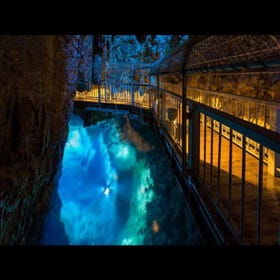
-
Address
Iwaizumi, Iwaizumi-cho, Shimohei-gun, Iwate Kannari 1-1, 027-0501
View Map -
Nearest Station
Iwaizumiomoto Station (Riasu Line)
26 minutes by bus
- Phone Number 0194-22-2566
-
Address
Iwaizumi, Iwaizumi-cho, Shimohei-gun, Iwate Kannari 1-1, 027-0501
Skiing in Iwate
While winter may seem like a show-stopper for travels in Iwate, if you are a skier or snowboarder, this is good news! Since the orographic features of Iwate generate intense winter in many of the inland regions, there are many superb ski resorts boasting premium snow in abundance. Here are some great ski resorts you'll find in Iwate.
What's the weather like in Iwate? When is the best time to visit?

Iwate, with its stunning mountain ranges and picturesque coastlines, experiences varying weather conditions throughout the year due to its unique geographic features. The prefecture's inland areas see extreme cold and hot weather during winter and summer, respectively.
Meanwhile, the regions along the coast have milder winters with warmer temperatures. Being the largest prefecture in Japan, each of the four areas in Iwate has its own distinct characteristics, which can greatly affect visitors' travel plans. To help you get a better understanding of the weather in some of the popular tourist spots, here's a brief overview of the weather characteristics in the four main areas.
- Southwestern Area/Hiraizumi and Geibikei Gorge: The climate here has moderate seasonal changes. Winters are cold with some snow, and temperatures can drop to -5°C. Spring and summer are warm, with beautiful blossoms and foliage peaking from mid-October to mid-November. Winter snow may limit transportation options, so the best time to visit is from April to November for temperate weather and full access to local amenities.
- Tono: Tono experiences a wide range of temperatures due to its basin location and inland climate. Winters are cold, with temperatures dropping to -10°C and heavy snow from December to February. Summers are hot, with temperatures averaging 28°C and occasionally exceeding 35°C in July and August. The best time to visit Tono is between April and October for pleasant weather and beautiful scenery.
- Sanriku Coastal Area: The Sanriku Coastal Area has mild temperatures and unpredictable weather due to Yamase and Foehn winds. Best time to visit is from April to October with September to November being ideal for clear views.
What should I pack when traveling to Iwate?
When traveling around Iwate, pack according to where you're visiting: inland, mountains, or coast. Inland sites like Tono and Morioka are cold from December to March, so bring winter gear. April and summer can be chilly, so bring jackets and breathable clothes. Coastal sites like Miyako and Kamaishi may see snow in winter, so pack extra warm clothes. The Ryusendo Cave can be chilly, so wear warm clothes you can layer. For mountainous areas like Mt. Hachimantai, bring hiking gear and warm clothes for spring and autumn.
Access to Iwate's four major areas
The primary mode of public transport for getting around Iwate is by train. The JR Lines (JR Tohoku Shinkansen, Tohoku Main Line, JR Yamada Line, JR Kamaishi Line) provide access to four of the main areas of Iwate. However, if you plan to explore rural areas, you will need to use local trains and buses and some prior research may be necessary.
To give you an idea of how much travel is involved, here is an outline of the accessibility of some of Iwate's main attractions.
- Getting to Morioka: Morioka is a transportation hub in Iwate. You can reach Morioka from Tokyo or Japan's west by JR Tohoku Shinkansen. Night buses are also available from Tokyo. Flights are available from major cities to Hanamaki Airport, and an airport bus can take you to Morioka from there in 45 mins.
- Getting to Mt. Hachimantai: To reach Mt. Hachimantai from Morioka, you can take a bus or rent a car. Buses from Morioka take 1 hour and 50 minutes to reach the Hachimantai Chojo bus stop, while driving takes approximately 40 minutes via Matsuo-Hachimantai IC. Note that the roads are closed from November to mid-April due to heavy snow.
- Getting to Hiraizumi: To get to Hiraizumi from Tokyo, take the JR Tohoku Shinkansen to Ichinoseki station (2hr 30min) then transfer to the JR Tohoku Main Line and in about 10 mins you'll be in Hiraizumi. From Morioka and Hanamaki Station, take the JR Tohoku Main Line to Hiraizumi. There are local buses available from Ichinoseki Station to take you to Chuson-ji, Geibikei and Genbikei.
- Getting to Geibeki Gorge: To reach Geibikei Gorge from Morioka, take the JR Tohoku Shinkansen or JR Tohoku Main Line to Ichinoseki Station, and transfer to the JR Ofunato Line for Geibikei Station. There are also local buses from the Ichinoseki area that stop at Geibikei Gorge and the Hiraizumi area. Plan your trip accordingly, as train schedules are infrequent. For more information, see the official website.
- Getting to Tono City: From Morioka, take the JR Tohoku Main Line to Hanamaki Station and transfer to the JR Kamaishi Line bound for Tono. Some trains may go directly to Tono Station.
- Getting to Kamaishi City: From Morioka Station, take the JR Tohoku Main Line to Hanamaki Station, then transfer to the Kamaishi Line. Some trains may go directly to Kamaishi Station.
What foods is Iwate famous for?
While being blessed with countless spectacular things to see and do, Iwate is also fortunate to hold many divine local specialties. Below are some of the lovely foods worthy of mention.
- Wanko Soba: Wanko soba is a traditional soba dish of Morioka, which dates back to over 400 years. Wanko soba are bowls of soba served in small portions, intended for guests to enjoy fresh boiled noodles to their heart's content. Approximately 10-15 servings are equivalent to a regular bowl, but if you have space for more, why not pile it up further and aim for a record?
When you are done, remember to seal your bowl with a lid, if not, noodles are served endlessly! - Maesawa Beef: Maesawa beef is a premium Wagyu brand which represents Iwate prefecture. Maesawa beef is strictly restricted to black wagyu cattles bred in the Maesawa region, located in the south western area, and it must further pass rigorous quality tests to be officially qualified as this branded beef. The gorgeous marbled meat of Maesawa beef is a piece of art and you'll be amazed with how the meat literally melts in your mouth and fills it with divine flavors.
Enjoy Maesawa beef in steak, sukiyaki or even sushi! - Seafood of Sanriku: The unique ocean current of rias Sanriku coast brings alongs a trove of fish and seafood at its finest. Along the Sanriku Rias coast, there are major fisherman ports, where you'll find premium quality seafood. From sea urchins, abalone, seaweed and many more, there is a great list of seafood you need to savor when you visit the coastal region.
- Mochi Cuisine: Since ancient times, mochi has been part of a traditional culture found in the southern area, especially the Ichinoseki region. The significance of mochi continues even until today, and there are over 300 types of mochi dishes found in this region.
- Nambu Senbei: Nanbu Senbei is a local's beloved snack, which are simple crackers made of flour, seasoned with sesame seeds or peanuts. While sesame and peanuts are the staple flavors, in recent years, you can find more varieties, even chocolate! Very simple it may seem, the nostalgic flavor of these crackers keeps you going for more!
What should I buy in Iwate?

- Nambu Tekki (Ironware): Nambu Tekki is a well-known traditional craft from Iwate, Japan. It was the first item to receive the official designation of "national traditional craftwork" from the government. Nambu ironware is made using pig iron and each piece is meticulously crafted by a skilled artisan. These ironware pieces are considered works of art, characterized by their simple yet sophisticated design that creates depth and layers in the finished product.
- Hidehira-nuri Lacquerware: Hidehira-nuri is a type of traditional lacquerware from Iwate that features lavish designs inspired by the Heian period and the history of Hiraizumi.
- Japanese Sake: Iwate's high-quality rice and water combine with traditional techniques to produce some of the finest sake in the world. Notable sake breweries include Kikunotsukasa Shuzo Brewery (founded in 1772), Azumamine Sake Brewery (founded in 1781), Hishiya Sake Brewery (founded in 1852), Asabiraki Sake Brewery (founded in 1871), Akabu Shuzo (founded in 1896), and Nambu Bijin (founded in 1902).
Tips on traveling around Iwate
Bring cash as well as credit cards.
Following the Covid-19 pandemic, cashless payments became much more popular in cities across Japan. However, having a certain amount of cash on hand is recommended when heading into more rural areas. Cash can be obtained at international ATMs in convenience stores like 7-Eleven as well as at the Japan Post.
Plan ahead when traveling into more rural areas.
Iwate Prefecture's countryside can pose challenges for foreign travelers as multilingual support is limited. Popular remote tourist spots like Mt. Hachimantai and the Sanriku coastal area can have infrequent public transportation, so be sure to plan your route ahead of time, and have hotel reservations in advance as well.
Solo travel is fine, but consider a local guide to learn more of the area's history.
While traveling around major cities and tourist sites, you can easily find tourist information centers and leaflets in foreign languages. However, having a tour guide is advisable to experience the full authentic experience, especially in places like Hiraizumi, Tono, and Morioka, where there are many layers of fascinating history. Due to the complex terrain in rural areas like Mt. Hachimantai, it's better to join a tour. Don't forget to have travel insurance to mitigate risks while traveling.
Iwate Prefecture is fine for families, too. Just plan ahead.
Iwate is a great destination for families with children. However, some remote areas may lack accessibility, so renting a car or taking a taxi instead of a bus is recommended to avoid tantrums. Some activities, such as exploring Jodogahama, Kitayamazaki, Ryusendo, and Mt. Hachimantai, may not be suitable for young children due to a lot of walking involved. Instead, rides on vehicles like Sanriku Railway or Geibikei Gorge River Cruise can be a fun experience. Museums like Morioka Children's Science Museum, Hanamaki's Miyazawa Kenji Fairytale Museum, and Tono's Denso-en are great for learning and entertainment. And don't miss Wanko Soba, a delicious and fun meal for children!
Recommended Iwate Tours
Where to stay in Iwate
Iwate is actually a hot spot for premium onsen, brimming with many great ryokans, hotels, lodges, and inns. There are also unique accommodations and budget-friendly hotels.
Here are some options you could consider to help you find good accommodations within the four areas.
Southwestern Area (Hiraizumi, Hanamaki City, Ichinoseki)
Southeastern Area (Tono City, Kamaishi)
Northwestern Area (Morioka City, Mt. Hachimantai)
Northeastern Area (Sanriku Coast, Miyako City, Kuji City)
Seasonal Events in Iwate
- Morioka Sakura Festival (Morioka): Early April to early May
- Kuzumaki Kogen Farm Carp Streamer Festival (Kuzumaki Town): April 27 - May 6
- Sanriku Fireworks Festival (Rikuzentakata): Late April
- YOSAKOI Sansa Dance Festival (Morioka): Late May
- Omorioka Mikoshi Festival (Morioka) - First Sunday in June
- Chagu Chagu Umako Festival (Takizawa City): Second Saturday in June
- Murone Tanabata Summer Festival (Ichnoseki City): Early July
- Morioka Sansa Dance Festival (Morioka): August 1-4
- Fujisawa Noyaki (Traditional Pottery) Festival (Ichinoseki): Early August
- Hanamaki Festival (Hanamaki): September
- Ichinoseki/Hiraizumi Balloon Festival (Ichinoseki): Mid-October
- See more events on Iwate's official tourism website
Written by:

*Prices and options mentioned are subject to change.
*Unless stated otherwise, all prices include tax.
Limited time offer: 10% discount coupons available now!
Recommended places for you
-
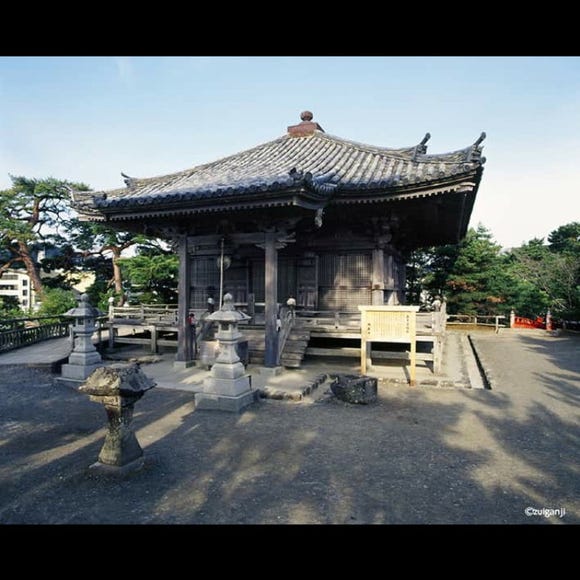
Zuiganji Temple
Temples
Sendai And Matsushima
-
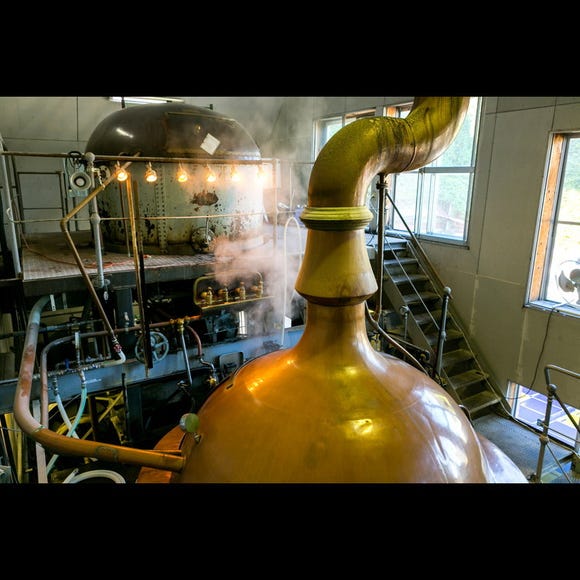
Baeren Brewery Co., Ltd.
Other Sightseeing
Morioka, Hiraizumi And Hachimantai
-
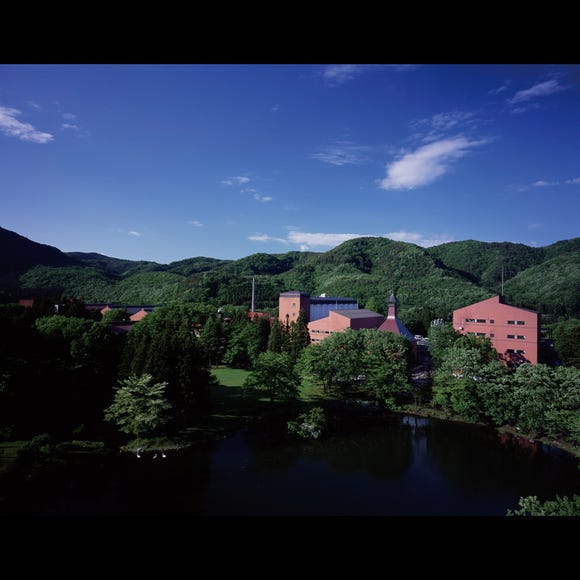
Nikka Whisky Sendai Distillery
Culture Experience
Sendai And Matsushima
-
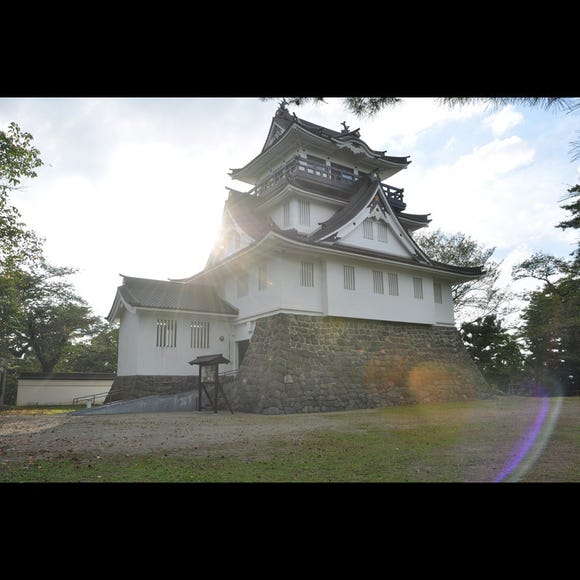
Yokote Park
Parks
Surrounding Areas Of Akita
-
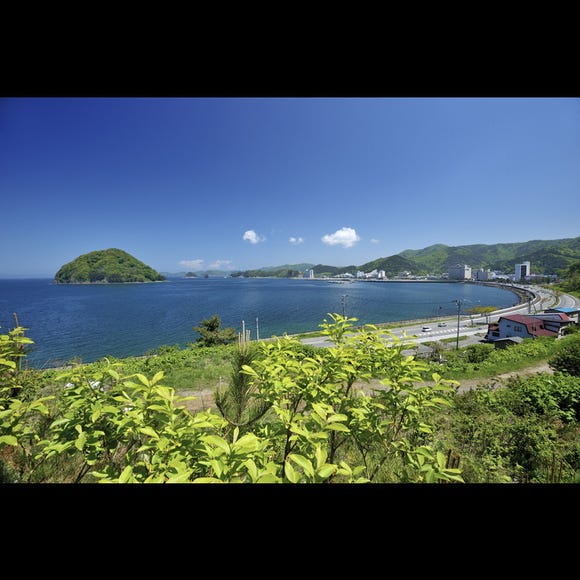
Asamushi Onsen
Hot Springs (Onsen) & Bath Houses (Sento)
Aomori, Hirosaki And Hachinohe
-
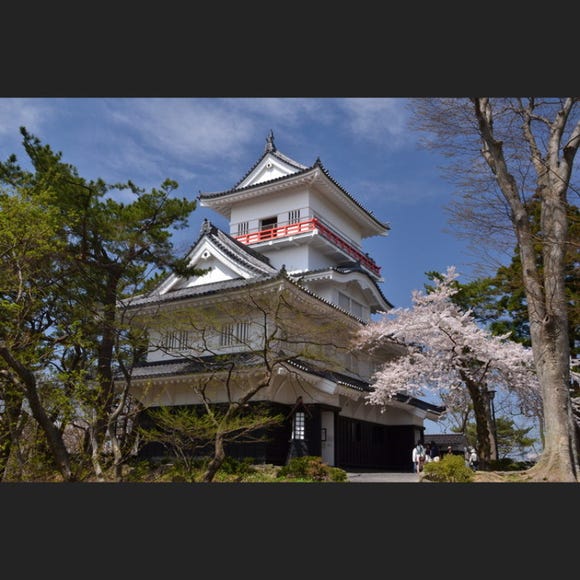
Senshu Park
Parks
Surrounding Areas Of Akita
-
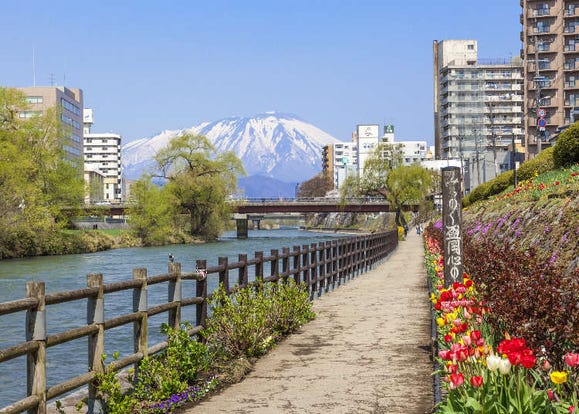
19 Best Things to Do in Morioka: See, Eat, and Shop Your Way Through Iwate's Capital City
-
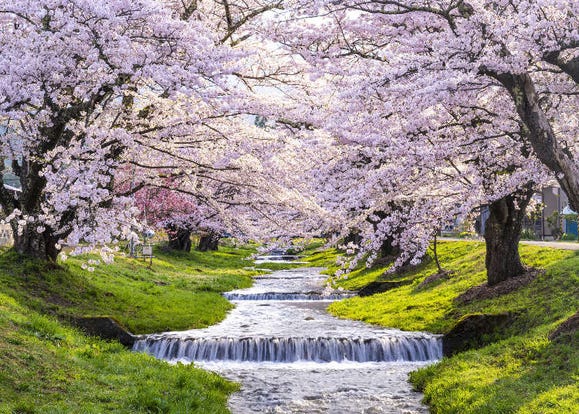
10 Dreamy Places in Fukushima to See the Cherry Blossoms
-
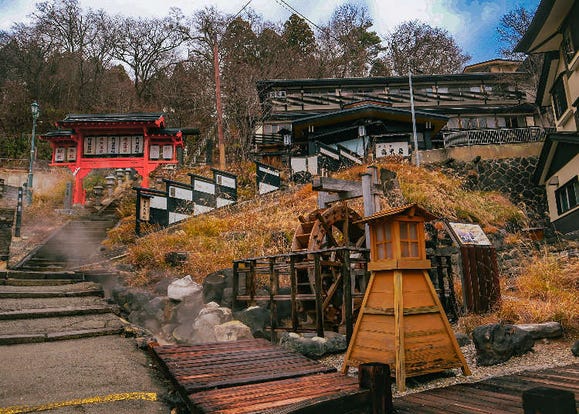
Plan Your Visit to Zao Onsen (Yamagata) - A Comprehensive Guide
-
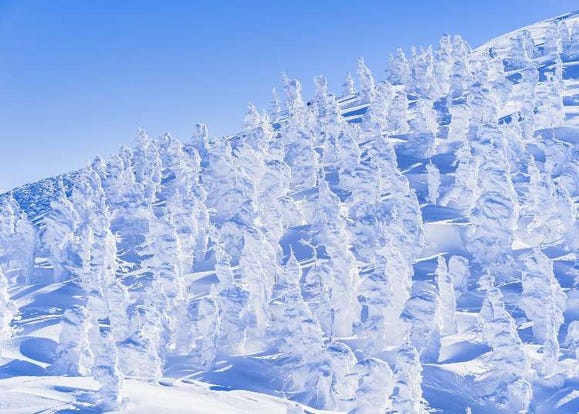
The Snow Monsters of Zao: Journey Among Yamagata’s Winter Wonders
-
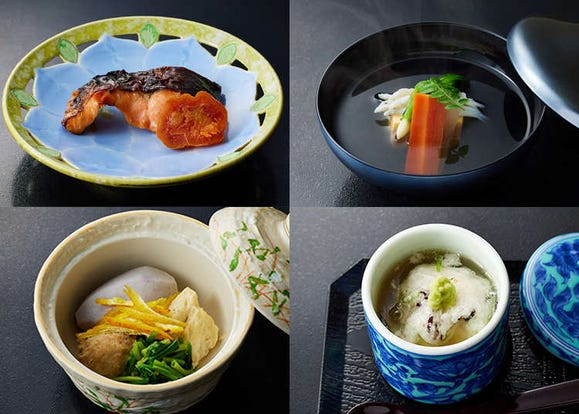
Japan’s Top Chefs Gather! New Cuisine Showcasing the Charms of Fukushima, a Treasure Trove of Produce
-
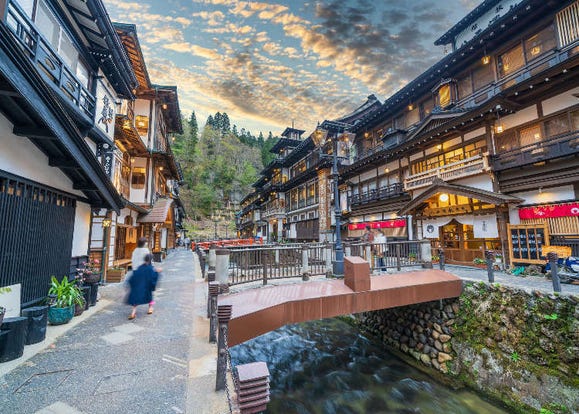
Dreamy Japan: 5 Scenic Onsen Towns in Yamagata Prefecture
-
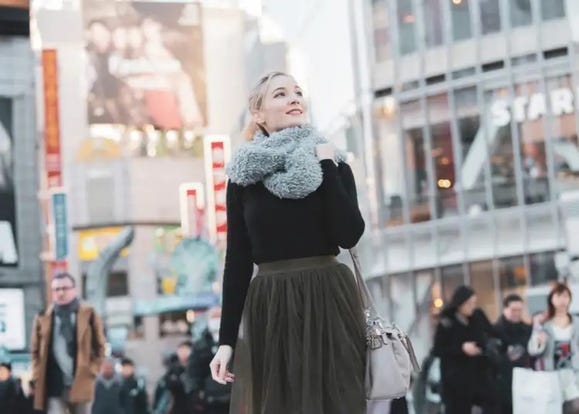
Secrets to Shopping in Japan: Guide to Annual Sales in Japan & Where to Shop
-

We Asked: What Do Foreign Tourists Love About Japan's Tohoku Region?
-
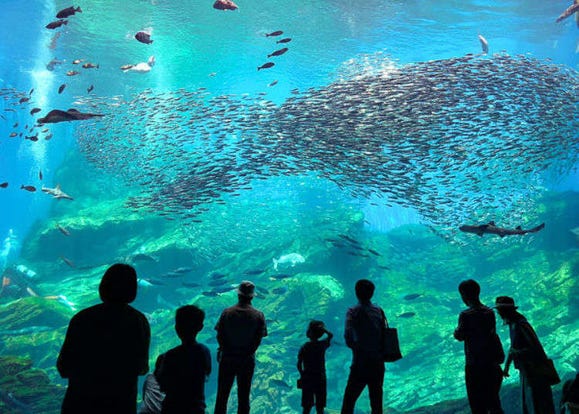
Sendai Umino-Mori Aquarium: Inside Northeast Japan's Largest Aqua Attraction
-
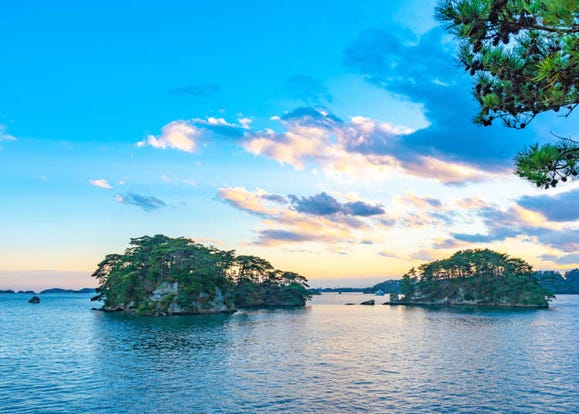
35 Things to Do in Sendai: Festivals, Nature, and Attractions
-
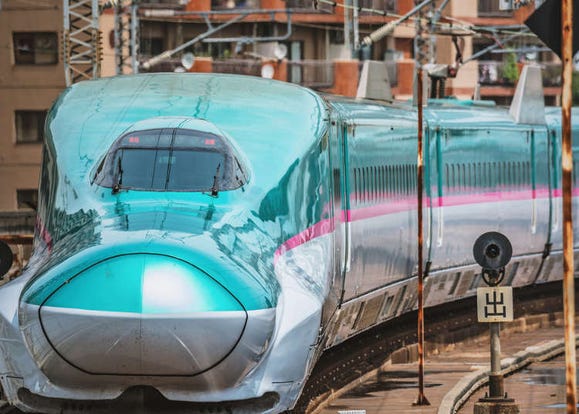
50% Off Shinkansen Tickets?! 'Osakini Tokudane Special' Has Been Extended – Now for Gran Class Too!
-
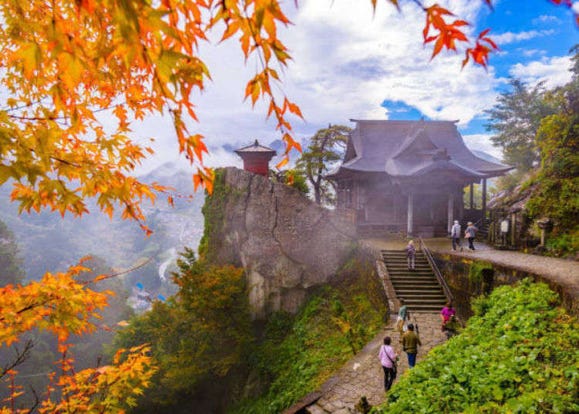
Bucket-list Worthy Places in Japan's Scenic Northeast


















































